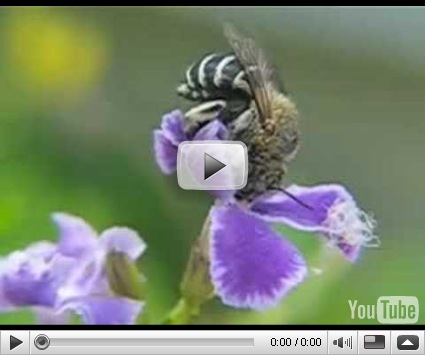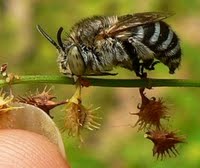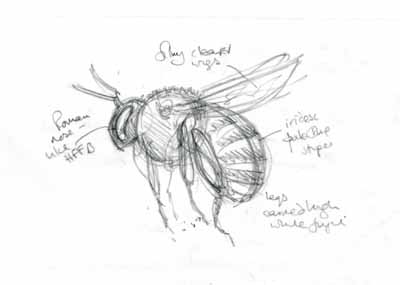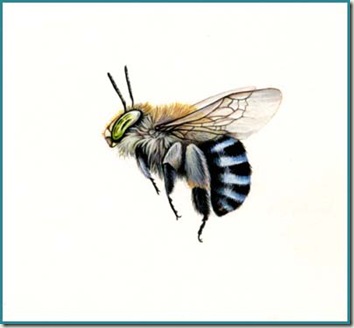For this project I am putting together a set of bees which hopefully will show their diversity and beauty, so variety in colour and shape and pattern is important.
There are many different species from all around the world and as you would expect Australia has some unusual native bees.
This is the very beautiful Blue Banded Bee which has pale iridescent blue instead of yellow stripes and digs burrows in soft sandstone or clay for their nests.
This is another solitary bee from the same family as the Hairy Footed Flower Bee from the last post.
The facts: CLASS: Insecta
ORDER: Hymenoptera, Bees, wasps, ants and sawflies.
SUPERFAMILY: Apoidea. Bees and some wasps.
FAMILY: Apidae. Bees.
TRIBE: Anthophorini
GENUS:Amegilla
SPECIES: Amegilla cingulata
This website, www.aussiebee.com is a mine of information and is one of many which does its very best to encourage the public to understand and cherish their native bees, underlining their importance in pollination.
This is another bee which performs “Buzz Pollination” (see my buzz pollination post here) and is now being seriously considered as a pollinator for commercial crops of tomatoes, eggplants and kiwifruit, as well as native plants such as Hibbertia, Senna and Solanum.
Up until now, tomato growers in Australia have had to use electronic fertilization methods and steps were being taken to import some European Bumble bees to help with the task.
However the Blue Banded Bee has proved to be very capable and a breeding programme is now being developed.
Do watch this delightful short film from Aussiebee and see the males jostling for position on top of the twig, with a lot of cross leg waving. They will gather together here to rest..if they can agree..
Where and how bees rest at night is a fascinating subject and for another post, but these bees will gather together clinging onto twigs with their jaws.
Here is a photo by Anna Tambour of a ” sleeping” blue banded bee from her post “The Sleeping Bees” which is lovely, as is her blog, Medlar Comfits here.
I particularly like this as it shows her finger nail and gives you an idea of the size of these beautiful bees.
She also includes this quote from another site. Yallaroo Wildlife
“Unfortunately many gardeners have been conditioned to reach for poisons as soon as they see something with six legs and wings.”
Which is probably worth putting at the bottom of every post about bees
This bee had to show off its beautiful stripes. Also, its wings are much more transparent and lighter in colour than some others.
____________________________________________
Bee No 10: The Australian Blue Banded Bee, Amegilla cingulata
Watercolour on Arches HP, size 3.5 inches










What a beautiful watercolor! You are right about educating folks about leaving off with the poisons… period in my opinion but most certainly … leave our bees alone… we need them and have no intention of bothering us. Great post. Carol
Carol you are so right.It's sometimes difficult to stop people being so afraid of bees though, and to be honest I have always given them a very respectful distance. Now I understand more about them.. it's all about understanding isnt it!
Love the water color drawing of the Blue Banded Bee can you draw one of the bumble bee and the European honey bee?
Hi, stumbled across your Blue-banded bee when looking up images of them and noticed this one wasn't a photo. Lovely artwork. Have you painted any dragonflies? They are another great subject and so much variety. The Blue-spotted Hawker is an attractive one. Kind regards Gary W Sydney